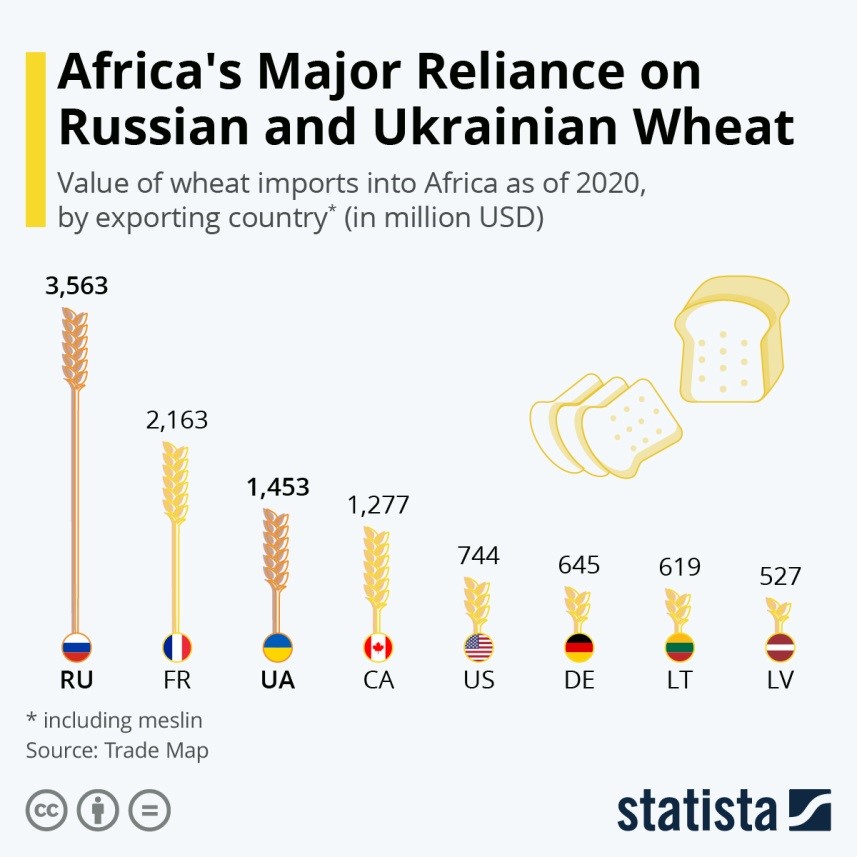It is noted that one of the most powerful shock waves that are felt outside Ukraine since the beginning of the Russian invasion is not in Europe, but in Africa. According to infographics using Trade Map data, the largest suppliers of wheat on the continent are Russia, France and Ukraine.
The African company Concerto, an economic intelligence company, estimates that 30 percent of all wheat consumption in Africa comes from grain supplies from Ukraine and Russia. And, for example, in Egypt this figure is about 80 percent.
In late February, Egyptian government representative Nader Saad told Arab News that the country had stocks capable of supplying wheat for nine months, adding: "Egypt is working on a plan to replace wheat imports from Russia and Ukraine. We have given permission to supply wheat to 14 countries, some of which are outside Europe."
As Africa and the world prepare to overcome significant wheat supplies reduction, prices are already rising sharply, which in turn is accelerating the African crisis. The FAO/UN Food Price Index, developed to track global food prices on a monthly basis, reached a record high in February, which was influenced largely by prices for wheat, dairy and vegetable oils.
Kenya is another country to which a significant share of wheat supplies comes from Ukraine and Russia. According to Der Spiegel, in early March, Paloma Fernandez, a representative for the Kenyan Grain Association, warned: "Wheat prices have already exploded, and flour mills have limited access to investment." Market saleswoman Beatrice Atieno summed up the current situation: “Sometimes we go to bed hungry because life has become so expensive ... Personally, I can no longer afford to buy bread. Instead, we eat potatoes for breakfast. "
